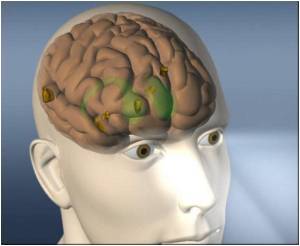
Currently doctors can do little to limit stroke damage after the first day following a stroke. Most strokes are ischemic (caused by blood clots). A drug called tPA can limit damage but must be given within the first three hours for the greatest benefit - and most patients do not receive treatment within that time frame.
Kartje and colleagues report on a treatment called anti-Nogo-A therapy. Nogo-A is a protein that inhibits the growth of nerve fibers called axons. It serves as a check on runaway nerve growth that could cause a patient to be overly sensitive to pain, or to experience involuntary movements. (The protein is called Nogo because it in effect says "No go" to axons.) In anti-Nogo therapy, an antibody disables the Nogo protein. This allows the growth of axons in the stroke-affected side of the body and the restoration of functions lost due to stroke.
Kartje and colleagues report dramatic results of anti-Nogo therapy in rats that had experienced medically induced strokes. Researchers trained rats to reach and grab food pellets with their front paws. One week after experiencing a stroke, the animals all had significant deficits in grabbing pellets with their stroke-impaired limbs. There was little improvement over the next eight weeks.
Nine weeks after their stroke, six rats received anti-Nogo therapy, four rats received a control treatment consisting of an inactive antibody and five rats received no treatment. Nine weeks later, rats that had received anti-Nogo therapy regained 78 percent of their ability to grab pellets.
By comparison, rats receiving no treatment regained 47 percent of that ability, and rats receiving the control treatment of inactive antibodies regained 33 percent of their pre-stroke performance.
Advertisement
Researchers wrote that anti-Nogo-A therapy "can induce remarkable compensatory sprouting and fiber growth, indicating the responsiveness of the chronically injured brain to form new neural networks under the proper growth conditions."
Advertisement
The report has been published in the journal Stroke.
Source-ANI














